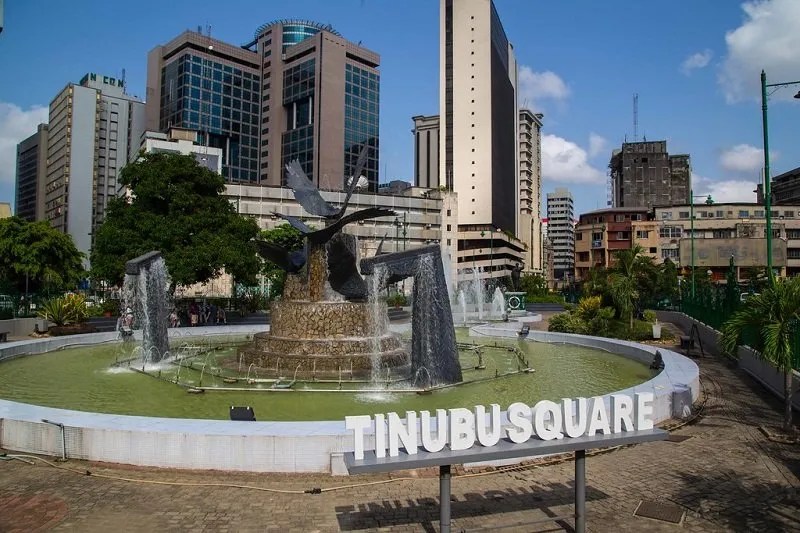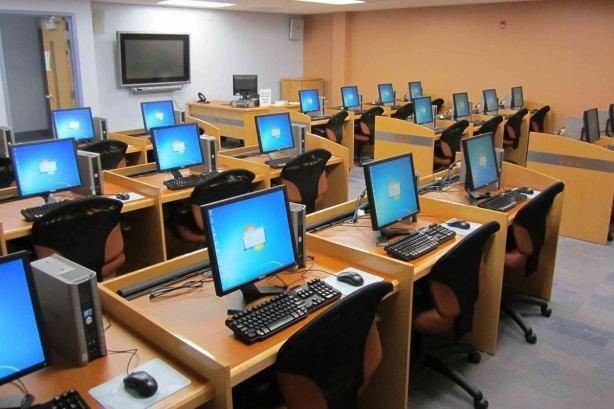
Lagos State, the largest city in Nigeria, is situated on the narrow Bight of Benin plain in the southwestern region of Nigeria. Lagos State, which stretches over 180 kilometers along the Guinea Coast of the Bight of Benin on the Atlantic Ocean, is located roughly at longitude 20 42’E and 32 2’E and between latitudes 60 22’N and 60 2’N. It is bordered in the north and east by the Ogun State of Nigeria and in the west by the Republic of Benin. The city of Lagos and the four administrative divisions of Ikeja, Ikorodu, Epe, and Badagry are all included in its territorial scope and political jurisdiction.
The States Decree No. 14 of 1967, which reorganized the Nigerian Federation into 12 States, resulted in the creation of Lagos State on May 27, 1967. Before this, the Federal Ministry of Lagos Affairs served as the region’s administrative body for the Lagos Municipality, which the Federal Government ruled while the Lagos City Council was in charge of the City of Lagos. Also under the control of the Western Region Government at the time were the Metropolitan areas [Colony Province] of Ikeja, Agege, Mushin, Ojo, Ikorodu, Epe, and Badagry. On April 11, 1968, the State officially began operations as a legal body, with Lagos Island serving as the State’s and the Federal Government’s capitals. Lagos, however, lost its status as the State’s capital when Ikeja replaced it as the Federal Capital Territory of Abuja in 1976.
Similarly, Lagos lost its position as Nigeria’s political capital on December 12, 1991, when the Federal Government’s official migration to Abuja occurred. Lagos nonetheless continues to be the country’s financial and commercial hub. According to historical political records, Lagos is to the people of Nigeria what the head is to the body of a human.
City of Lagos
Lagos State Population
With more than 12 million residents, Lagos State has the second-highest population in Nigeria. Nigeria’s central economic hub is Lagos State. Lagos Island and other islands shielded from the Atlantic Ocean by sand spits are where Lagos State’s metropolitan region first developed. Ikeja, the capital of Lagos, and Agege are more than 25 miles northwest of Lagos Island, indicating that the city has grown onto the mainland west of the lagoon.
A growing global urban agglomeration, Lagos is the lagoon city of Nigeria, the largest NEPAD City in Africa, and the sixth-largest megacity in the world. In 1995, the city’s population skyrocketed to over 10 million, giving it megacity status. The Megacity region is geographically disjointed [a maze of islands/mainland], situated on poor soil [wetlands], and overtaken by its growth [6 per cent to 8 percent]. It roughly corresponds to 17 of the State’s 20 Local Governments and 37 Local Council Development Areas and impinges imperceptibly on four local government areas of the neighboring Ogun State of Nigeria.
In 2012, Lagos surpassed Cairo as the biggest city in Africa. Its economy would rank fifth in Africa if it were a nation. Lagos State is home to most commercial banks and conglomerates in Nigeria. With a total area of 1,171.28 square kilometres, the city of Lagos is vast (452.23 square miles). The population density is around 6,871 people per square kilometre, with the population still expanding and already topping at least 12 million people (17,800 per square mile).
Although Lagos State is the smallest state in Nigeria, it boasts the biggest urban population, 27.4% of the estimated total population. Given that Metropolitan Lagos makes up over 85% of this population in an area that represents 37% of the State’s total land area and that the population of Lagos is increasing 10 times more quickly than that of New York and Los Angeles and more than the combined populations of 32 African countries, the State is predicted to reach the 35 million mark in 2040.
Lagos Population Growth
Lagos has had a phenomenal expansion, growing from 1.4 million people in 1970 to 12 million now. The city currently contributes 25% of Nigeria’s overall GDP and is home to numerous millionaires. Additionally, it has the eighth-fastest growth rate in Africa. Lagos, in contrast to the rest of Nigeria, is an excellent illustration of what is achievable when a government provides energy and other efforts to its citizens.
Surprisingly, the United Nations predicted in 1999 that the metropolitan area of the city, which had just 290,000 persons in 1950, would have more than 20 million by 2010 and be among the ten cities in the world with the most population. Between the predictions and the present estimations, it is undoubtedly close, and we will continue to monitor as the growth unfolds. Lagos is a peek into the future as well. If Nigeria continues to expand at its current rate, it will have 300 million people, the same as the United States’ current population, living in an area the size of Nevada, New Mexico, and Arizona in around 25 years. The population of Lagos is predicted to quadruple once more by 2050, making it the third-largest cities in the world while having less infrastructure than any other major city.
Lagos Demographics
Lagos’s population is highly diversified due to immigration from the region and other parts of Nigeria. Although there are 250 different ethnic groups in Lagos, the city is also home to tiny populations of people who are British, Greek, Chinese, American, Lebanese, and Japanese people. Communities of formerly enslaved people from Sierra Leone and the Americas, who were of Afro-Brazilian and Afro-Cuban heritage, can also be found in Lagos.
Lagos State is primarily a Yoruba environment, with the Aworis and Ogus of that sub-nationality living in the Ikeja and Badagry Divisions. The Ogus is found mainly in Badagry, while the Awori makes up the indigenous population of Lagos. There are also pioneer immigrants known as the Ekos, such as the Edos, Saros, Brazilians, Kannike/Tapa, etc. There are pockets of Eko-Awori settlers throughout the entire State’s coastland and riverine zones. Still, the Remos and Ijebus make up the majority of the native population in the Ikorodu and Epe Divisions. Nevertheless, despite being primarily Yoruba, the State is a global socio-cultural melting pot that draws Africans, foreigners, and Nigerians. Due to its strong economic foundation, strategic marine location, and socio-political prominence, which led to an increase in the state’s migration.
Despite the fact that Lagos is home to many millionaires, slums house around 66 per cent of the population. With millions of people residing in and around the lagoons without access to roads, potable water, electricity, or trash disposal, the metropolis has been termed the “mega-city of slums.” Nine of the city’s most enormous slums have been designated by the World Bank for improvement with a $200 million loan from the United States, which would help nearly one million people. About 100,000 people reside in the Makoko slum, which is unsafe for its occupants and rife with crime.
Lagos is one of the regions in the nation with the most public schools, pupils, and teachers. Since 1967, Nigeria’s population has produced the most candidates for public examinations. Lagos has continued to make significant investments in the nation’s educational infrastructure, and in 2017, the state budget for Lagos allotted the education sector about 12 per cent of its total spending or just over 92 billion naira. Over 1 million kids currently receive free education in Lagos’ 1,010 elementary schools, 670 junior and senior schools, and five technical and vocational institutions. Private schools, however, are now a significant component of Lagos’ educational landscape. Around 18,000 new private schools have lately emerged, the vast majority of which are not recognized by the government and lack any resources or established lesson plans. More pupils attend these private schools, up to 1.4 million, than are currently enrolled in Lagos’s public schools. While these private schools might offer a potential remedy for the unequal access to education that Lagos is presently experiencing, they might also make matters worse by providing subpar educational quality and failing to manage their institutions’ finances prudently.
Causes of Lagos Rising Population
Lagos’ population is growing naturally, with a large number of births each year outpacing mortality (due to high birth rates). Lagos’s population is also very young; thus, the natural increase will continue to add people there yearly. In fact, Lagos has a population that is over 50% younger than 25.
Aside from the natural population growth, people are attracted to Lagos for the following reason:
- Lagos offers a variety of social chances because it has better access to resources and services than rural Nigeria does.
- In Lagos, there are more hospitals and medical facilities as well as a more comprehensive selection of medications.
- 40 per cent of people in rural areas in the north of the country don’t even attend primary school, whereas 68 per cent of the population of Lagos has a secondary education. The education population divide between people in the north attracts more people to Lagos for education tourism.
- People in Lagos can utilize electricity for lighting and cooking. Being able to access energy also allows people to grow their enterprises.
- Water treatment facilities supply clean water that is provided directly to various city locations.
- In Lagos, there are more colleges and universities than in rural areas. Education increases a person’s likelihood of landing a job in one of the expanding companies.
- Rural Nigeria is very impoverished; most people travel to Lagos in pursuit of better employment.
- Many construction jobs are available because of the city’s rapid growth, such as those needed to establish the new commercial center, Eko Atlantic.
- Many of the nation’s banks, government agencies, and manufacturing enterprises are located in Lagos (e.g. making food and drink). Two essential ports and a fishing sector translate to more job opportunities.
- Lagos has more job openings than any other city in Nigeria. Working in the informal sector is still feasible, for instance, as a street vendor or recycling rubbish, paying no taxes, even if you cannot obtain employment in the formal economy.
Contribution of Lagos Population to its Financial Hub Status
Lagos’s broad economy, supported by public-private investments and its estimated population of over 12 million, is the most significant contributor to Nigeria’s GDP. Nigeria and the ECOWAS still rely on Lagos State as their economic, financial, and commercial hub. Regionally, Lagos State is an economic powerhouse and the starting point for innovation and development in Nigeria and sub-Saharan Africa because it’s Gross National Product [GNP] is three times that of any West African country.
Nigeria’s and West Africa’s regional financial system, which is dominated by megabanks, insurance companies, microfinance/community banks, discount stores, and the capital market, is centered in Lagos State. Despite the Central Bank of Nigeria’s move of its headquarters to Abuja, the role of Lagos as a regional financial hub is widely recognized.
Lagos State is crucial to the Nigerian economy and continues to serve as the hub of economic activity and the country’s commercial hub. Over 50% of Nigeria’s non-oil GDP and 26.7 per cent of the country’s overall GDP were contributed by the Lagos Gross Domestic Product (GDP). Lagos is home to more than half of Nigeria’s non-oil industrial capacity. All of Nigeria’s main banks have their headquarters in Lagos, making it the country’s financial center. The Nigerian Stock Exchange is also located there. It generates more than half of Nigeria’s port revenues and over 80% of the nation’s foreign commerce flows.
Conclusion
The lack of housing in a city like Lagos is a significant issue. The most recent estimate places the housing shortage in Lagos at 2.5 million units. Other problems with security, the environment, and health result from this. Future pandemics and diseases are a ticking time bomb due to the overpopulation and high population density in some locations of Lagos. Therefore, to reduce congestion and restore sanity to these neighborhoods, the Lagos state government needs to start designing and building low-cost homes that require less concrete and blocks and can be manufactured quickly.



